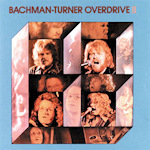
"Laid Back" is the debut solo album by Gregg Allman, the lead vocalist and keyboardist of the Allman Brothers Band. It was released in 1973, shortly after the Allman Brothers Band temporarily disbanded. The album was produced by Johnny Sandlin and recorded at Capricorn Studios in Macon, Georgia.
The album features a mix of original compositions by Allman, covers of songs by other artists, and a few tracks co-written with other musicians. The music is a departure from the blues and Southern rock sound of the Allman Brothers Band, and incorporates elements of country, soul, and gospel.
The album's most well-known track is "Midnight Rider," a song co-written by Allman and Robert Payne. The song was originally recorded by the Allman Brothers Band for their 1970 album "Idlewild South," but it gained new popularity when it was included on "Laid Back." Other notable tracks on the album include "Please Call Home," a ballad written by Allman, and "Will the Circle Be Unbroken," a traditional gospel song.
Track by Track (vinyl):
- "Midnight Rider":
- Description: "Midnight Rider" is arguably the most iconic track on the album. It features Allman's soulful vocals and a distinctive guitar riff. The lyrics convey a sense of restlessness and the desire for freedom.
- Musical Elements: The song blends Southern rock with elements of blues and country, showcasing Allman's versatility as a musician. The slide guitar work adds a touch of Americana to the overall sound.
- Impact: This song's inclusion on "Laid Back" brought it renewed attention and solidified its status as one of Gregg Allman's signature tracks.
- "Queen of Hearts":
- Description: "Queen of Hearts" is a laid-back (no pun intended) ballad that showcases Allman's emotional depth. The lyrics tell a story of heartbreak and lost love.
- Musical Elements: The arrangement is mellow, with gentle piano and acoustic guitar supporting Allman's vocals. The song has a timeless quality, drawing on both rock and country influences.
- Impact: While not as well-known as some other tracks, "Queen of Hearts" is a gem that highlights Allman's ability to convey deep emotions through his music.
- "Please Call Home":
- Description: This track is a soulful ballad with poignant lyrics about longing and separation. Allman's vocals are emotive, and the overall mood is reflective.
- Musical Elements: The song features a prominent piano, and the arrangement is more stripped down compared to some of Allman's work with the Allman Brothers Band. The soulful, gospel-inspired harmonies add richness to the composition.
- Impact: "Please Call Home" showcases Allman's ability to connect with the listener on an emotional level and stands out for its soulful delivery.
- "Don't Mess Up a Good Thing":
- Description: A cover of the classic R&B song, Allman's rendition infuses a bit of Southern rock flavor. It's a lively, upbeat track.
- Musical Elements: The song features a prominent brass section, giving it a funky and energetic vibe. Allman's vocals are spirited and add a rock twist to the R&B original.
- Impact: "Don't Mess Up a Good Thing" adds diversity to the album, showcasing Allman's ability to reinterpret and put his stamp on songs from different genres.
- "These Days":
- Description: "These Days" is a reflective and introspective ballad that explores themes of change and the passage of time.
- Musical Elements: The song is characterized by its acoustic guitar-driven arrangement, with Allman's vocals taking center stage. The melancholic tone is accentuated by the thoughtful lyrics.
- Impact: "These Days" is a testament to Allman's songwriting prowess, offering a more introspective and personal side to his musical expression.
- "Multi-Colored Lady":
- Description: A piano-driven track with a soulful and romantic feel, "Multi-Colored Lady" is a love song that stands out for its dreamy atmosphere.
- Musical Elements: The piano is the star here, creating a lush and melodic backdrop for Allman's vocals. The song has a timeless quality, evoking a sense of nostalgia.
- Impact: "Multi-Colored Lady" adds a touch of romance to the album, showcasing Allman's ability to navigate various musical styles with ease.
- "All My Friends":
- Description: The closing track of the album, "All My Friends," is an extended jam that allows Allman and the accompanying musicians to showcase their improvisational skills.
- Musical Elements: The song features extended instrumental sections, including a notable guitar solo. The jam-like quality adds a dynamic element to the album's overall flow.
- Impact: "All My Friends" serves as a testament to Allman's roots in improvisational Southern rock, providing a fitting conclusion to the album.
- "Will the Circle Be Unbroken":
- Description: "Will the Circle Be Unbroken" is a traditional gospel song that has been covered by numerous artists. Allman's rendition on "Laid Back" infuses his own style into this timeless piece.
- Musical Elements: The song features a soulful and heartfelt vocal performance by Allman. The arrangement includes gospel-inspired harmonies, acoustic guitar, and a contemplative piano, creating a serene and spiritual atmosphere.
- Impact: Closing the album with a traditional gospel song adds a spiritual and reflective dimension to "Laid Back." Allman's rendition of "Will the Circle Be Unbroken" serves as a poignant and soul-stirring conclusion to the musical journey of the album.
In summary, "Laid Back" is a diverse and well-crafted album that showcases Gregg Allman's versatility as a musician. From soulful ballads to energetic covers and extended jams, each track adds a layer to the overall narrative of the album. Allman's emotive vocals and the skillful musicianship of the accompanying artists make "Laid Back" a standout work in the realm of solo rock albums
"Laid Back" was a commercial success, reaching #13 on the Billboard 200 chart. It received positive reviews from critics, who praised Allman's vocals and the album's diverse musical styles. The album has since become a classic of 1970s rock music and a landmark in Allman's career as a musician.
Gregg Allman genealogy and discographyExplore Gregg Allman music on Amazon...










